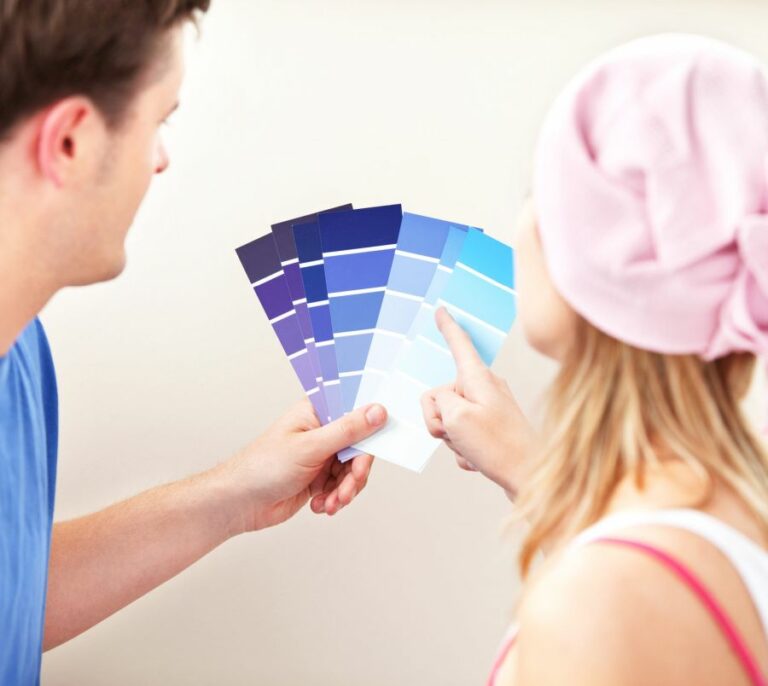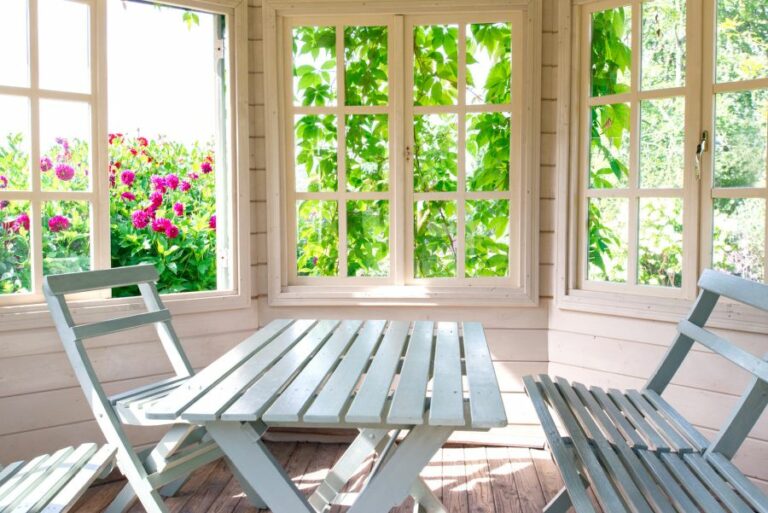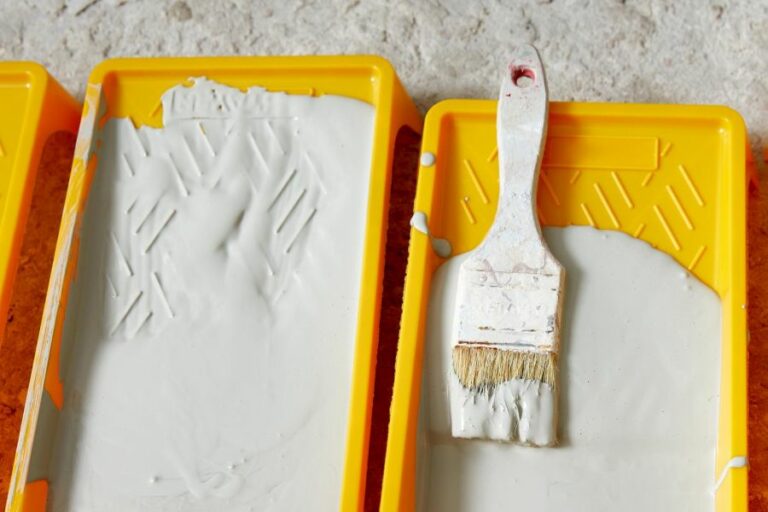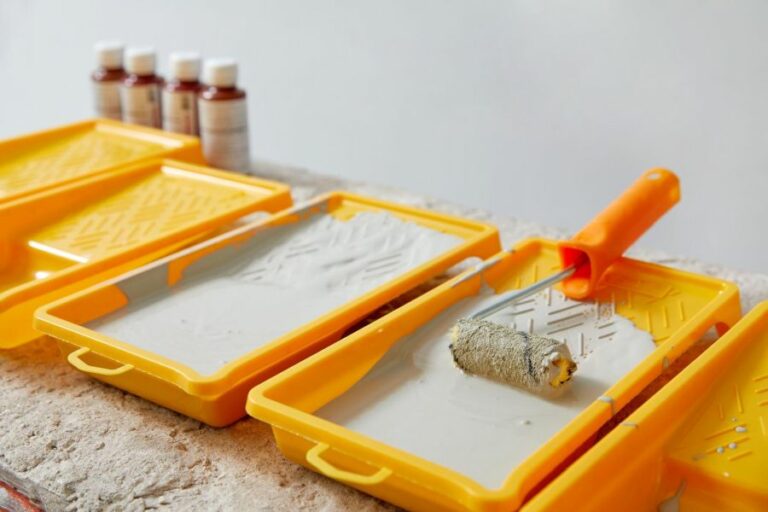Lucent Indoor Wall Paint Choices, 25 Things You Should Know
Choosing the perfect lucent indoor wall paint can be daunting, weighing numerous aspects. We’re here to guide you expertly through this process! Together, we’ll navigate the vast ocean of color selections, finishes, and qualities to ensure your space will shine in the best possible light.
Lucent indoor wall paint choices:
Lucent indoor wall paint offers various options, including matte, eggshell, satin, semi-gloss, and high-gloss finishes. Choose the appropriate paint type based on the room’s purpose, traffic, and lighting conditions. Test paint samples to ensure satisfaction, and consider color trends and personal preferences when making your final decision.

Discover the world of Lucent indoor wall paint choices that can transform your living space into a vibrant sanctuary. From shades that enhance natural light to hues that create calming ambiance, there’s much more to explore. Read on to find the perfect paint option for your home.
Contents
- 1 Illuminating Indoor Wall Paint Options
- 2 Top Trending Interior Wall Colors Revealed
- 3 Ultimate Interior Wall Paint Selections
- 4 Unraveling the Lucent Color Mystery
- 5 Discovering Timeless Wall Color Schemes
Illuminating Indoor Wall Paint Options
As a homeowner or an interior designer, choosing the right paint for the walls of a room is essential. When selecting Lucent indoor wall paint, there are plenty of choices to make that can help transform a space into a cohesive and stylish living area.
• Types of Lucent Indoor Wall Paints
Lucent offers a wide range of indoor wall paints designed to cater to various style preferences, architectural designs, and room functions. Understanding the difference between paint types can help narrow down your choices and ultimately lead to the perfect pick.
– Matte Paint
Matte paint, also known as flat paint, provides a smooth, non-reflective finish that is ideal for hiding imperfections and uneven surfaces. This paint choice is particularly recommended for walls in living rooms, bedrooms, and other low-traffic areas.
– Eggshell Paint
Eggshell paint has a slight sheen to it, giving walls a soft, velvety appearance. This type of paint is better at resisting stains and scuffs than matte options, making it a popular choice for dining rooms, children’s rooms, and hallways.
– Satin Paint
Satin paint offers a pearl-like finish that is both elegant and durable. It is easy to clean and tends to stand up better over time compared to other paint finishes. This makes satin a suitable choice for doors, window frames, kitchens, bathrooms, and high-traffic areas.
– Semi-gloss Paint
Semi-gloss paint has a reflective quality that brings an added level of sophistication to a room. It is highly resistant to moisture and easy to clean, making it perfect for use in kitchens, bathrooms, and laundry rooms.
– High-gloss Paint
High-gloss paint provides a mirror-like finish, great for adding visual interest and depth to a room. However, this paint type tends to showcase imperfections, so its best used on surfaces that are smoother and in areas that require frequent cleaning, such as molding or trim.
• Tips for Choosing the Right Lucent Wall Paint
Now that we have explored various Lucent indoor wall paint options, here are some helpful tips to consider when making your final decision.
– Consider the Room’s Purpose and Traffic
Before choosing a Lucent wall paint, think about the room’s primary function and the level of traffic it will experience. More durable paint options, such as satin or semi-gloss, are more appropriate for high-traffic areas, while matte and eggshell paints are better suited for rooms with less footfall.
– Take Lighting into Account
Natural and artificial lighting can significantly impact how a paint color appears on your walls. Be sure to test paint samples in the space you plan to paint, paying close attention to how the color changes throughout the day and under different lighting conditions.
– Explore Color Trends and Personal Preferences
When it comes to selecting a paint color, personal preferences and current trends can play a significant role. Popular color choices can add to the room’s overall aesthetic and enhance other design elements within the space.
Be sure to take inspiration from magazines, online resources, or even professional interior designers before making your decision.
– Test Paint Samples
It is important to test paint samples on the walls before committing to a particular color or finish. This can help avoid costly mistakes and ensure that you are satisfied with the final results.
Benjamin Moore’s Color Viewer is an excellent online resource that can help visualize how different paint colors will look in a space, making it easier to select the perfect option.
• The Bottom Line
Having a well-painted room is crucial for creating a beautiful and comfortable living space. When it comes to choosing Lucent indoor wall paint, be sure to consider the type of paint, room function, lighting, and your personal preferences.
Don’t forget to test paint samples in your space under different lighting conditions to ensure you make the best possible choice for your home.
Top Trending Interior Wall Colors Revealed
Creating the perfect atmosphere in a living space comes down to various factors, including the choice of colors for the interior walls. The ideal color for your walls can significantly influence the mood and overall appearance of a room.
• The Reigning Champion: Neutral Shades
Neutral shades hold the crown for the most popular color choice for interior walls. These shades include shades of white, beige, and gray. The widespread appeal of neutral colors stems from their timeless nature, versatility, and calming effect. Let’s look at each of these factors in more detail.
– Timelessness
Neutral colors have stood the test of time, remaining a popular choice for interiors throughout the ages. Unlike trendy colors that may fall out of favor as styles change, neutrals have proven to be a lasting classic.
This characteristic of neutral colors makes them an excellent choice for homeowners who want a color scheme that will remain stylish for years to come without requiring frequent updates.
– Versatility
Another advantage of neutral colors is their versatility. They form the ideal backdrop for almost any decorating style and can adapt to various aesthetic preferences.
You can easily change the look of your space by incorporating different elements such as bold accents, textured fabrics, or contrasting colors, all of which stand out beautifully against a neutral backdrop.
This flexibility allows homeowners and designers to personalize and update their interior spaces without the need for a complete wall color overhaul.
– Calming Effect
Neutral colors also boast a calming effect, which is particularly beneficial for creating zen-like spaces that promote relaxation and well-being. This attribute makes neutrals an excellent choice for bedrooms, living rooms, and other spaces where homeowners want to create a peaceful environment.
• Top Color Choices Within the Neutral Spectrum
While neutral shades as a whole dominate the world of interior wall colors, certain hues have emerged as particularly popular choices. We will now discuss three of these sought-after shades.
– White
White walls have consistently been a popular choice for interior walls, with a multitude of variations to choose from, such as off-white, ivory, and cream. White walls create a sense of spaciousness and brightness and provide a clean canvas for other design elements to shine.
Additionally, white walls are a classic choice for minimalist interiors.
– Beige
Beige offers a warmer alternative to white walls while still maintaining a sense of neutrality. This color is often favored for living rooms, as it creates a warm and inviting atmosphere. The earthy undertones of beige also work well in spaces that aim to capture a more natural, organic aesthetic.
– Gray
In recent years, gray has become an incredibly popular choice for interior walls. It is often seen as the modern alternative to beige, offering a range of shades from soft dove gray to rich charcoal. Gray walls can create a sleek, sophisticated look that works particularly well in contemporary interiors.
Additionally, the cooler undertones of gray can help to balance the warmth of wood floors or other warm elements within the space.
• Expert Tips for Choosing the Perfect Neutral Shade
Having established that neutral shades are the most popular color choice for interior walls, it’s important to consider what factors to keep in mind when selecting the perfect shade for your space.
- Consider your space: It’s essential to think about the specific room you are painting and the desired atmosphere. For example, opting for warmer shades such as beige or cream can create an inviting ambiance in living spaces, whereas cooler shades like gray may be more suitable for modern, sleek aesthetics.
- Lighting matters: The natural light in a room can significantly affect how a color appears on your walls. It is crucial to observe how a potential color swatch looks throughout the day under different lighting conditions to make an informed choice.
- Test it out: Before painting an entire room, it is wise to paint a small section of the wall first. This step will allow you to see how the color reacts to the room’s specific lighting conditions and ultimately help you decide if it’s the right choice for your space.
By understanding the popularity of neutral colors for interior walls and considering expert tips, it becomes easier for homeowners and designers to create beautiful, timeless, and versatile spaces that truly feel like home.
Ultimate Interior Wall Paint Selections
When it comes to home improvement, one of the quickest and most affordable ways to give your living spaces a fresh look is by giving the walls a new coat of paint. However, selecting the best wall paint from a sea of options can be a daunting task.
• Types of Interior Wall Paints
Before diving into the best wall paint for your home’s interior, let’s look at the different types of wall paints available on the market.
– Water-Based Paints
Water-based paints, also known as latex or acrylic paints, are the most popular choice for interior walls. They are easy to apply, dry quickly, and have low levels of toxic emissions. Additionally, they are resistant to mildew and cracking.
– Oil-Based Paints
Oil-based paints, also known as solvent-based or alkyd paints, boast a durable and smooth finish. They are more resistant to wear and tear compared to water-based paints. However, they take longer to dry, release stronger fumes, and require solvents for cleanup.
– Paint Finishes
Paints come in various finishes, such as matte, eggshell, satin, semi-gloss, and high gloss. The finish you select primarily depends on where the paint will be applied and the desired aesthetic.
• Factors to Consider When Choosing Wall Paint
When selecting the best paint for your home’s interior, consider the following factors:
– Durability
The paint should withstand daily wear and tear, especially in high-traffic areas such as hallways, kitchens, and bathrooms.
– Cleanability
Opt for paint that can be easily cleaned with soap and water, particularly for areas prone to spills, stains, and moisture.
– Coverage
Choose paint with good coverage to ensure fewer coats are needed, ultimately saving you time and money.
– VOC Content
Volatile Organic Compounds (VOCs) are chemicals released by paint as it dries. These compounds can cause respiratory issues and contribute to environmental pollution. Therefore, opt for low-VOC or zero-VOC paints for a safer and healthier option.
• Top Interior Wall Paint Recommendations
Based on the factors discussed above, here are some top recommendations for the best interior wall paints.
– Water-Based Paint: Benjamin Moore Regal Select
I recommend the Benjamin Moore Regal Select line for its excellent coverage, durability, and low-VOC content. This water-based paint offers a wide variety of finishes and an extensive color palette to choose from. The paint is easy to apply and dries quickly, making it perfect for any room in your house.
– Oil-Based Paint: Sherwin-Williams ProClassic
For those who prefer oil-based paints, the Sherwin-Williams ProClassic line is a superior option. It boasts a smooth, self-leveling finish and excellent durability. However, do note that proper ventilation is necessary during the application, and cleanup requires solvents.
– Low-VOC Paint: BEHR Premium Plus
For environmentally conscious homeowners, the BEHR Premium Plus line offers a zero-VOC option. This water-based paint provides excellent coverage and durability, as well as the added benefit of being mildew-resistant.
• Painting Tips for Best Results
Finally, keep in mind these tips for the best painting results:
- Prep your walls by cleaning, patching, and sanding any imperfections
- Use high-quality painting tools such as brushes, rollers, and painter’s tape
- Apply a primer before painting, especially when changing colors or covering stains
- Start painting from the top down and maintain a wet edge for an even finish
- Apply multiple thin coats instead of one thick coat for better coverage and durability
- Allow ample time for the paint to dry between coats
In conclusion, the best wall paint for your home’s interior will depend on your specific needs and preferences. Consider factors such as durability, cleanability, coverage, and VOC content while selecting the right paint for your project.
By following the recommendations and tips provided in this article, you can transform your living spaces with impressive results.
For additional resources on selecting the best paint for your home, the EPA and Consumer Reports provide valuable information that can guide your decision-making process.
Brand | Type | Finish | Features | Best For |
|---|---|---|---|---|
Benjamin Moore | Regal Select | Matte, Eggshell, Semi-Gloss, Pearl | Low VOCs, Washable, Touch-Up Friendly, Low Odor | Living Room, Bedroom, Dining Room, Hallway |
Behr | Premium Plus | Flat, Eggshell, Satin, Semi-Gloss | Mildew Resistant, Stain-Blocking, Zero VOCs | Bathroom, Kitchen, Bedroom, Kids’ Room |
Sherwin-Williams | Emerald Interior | Flat, Matte, Satin, Semi-Gloss | Advanced Stain Blocking, Low VOCs, Antimicrobial | Living Room, Bedroom, Dining Room, Bathroom, Kitchen |
Unraveling the Lucent Color Mystery
• Exploring the Definition of “Lucent”
The term “lucent” finds its origins in the Latin word lucentem, meaning “to shine” or “give off light.” In general, it refers to materials or objects that allow light to pass through while also reflecting it to varying degrees.
Consequently, a lucent color is one that combines both transparency and a visible hue, often resulting in a visually striking appearance. In essence, lucent colors are seemingly emancipated from the boundaries of opaqueness and can be characterized by a certain dynamism and depth.
• The Science Behind Lucent Colors
– The Role of Optical Properties
Understanding the phenomenon of lucent colors lies in the realm of optics, the branch of physics that focuses on the behavior of light.
According to The Physics Classroom, the behavior of light as it passes through an object greatly depends on factors such as wavelength, the medium, and the angle of incidence.
These factors ultimately determine how much light is absorbed, reflected, and transmitted by a particular object and, consequently, the object’s perceived color.
Lucent colors come into play when an object exhibits both transparency and a given hue. In these cases, both the transmission of light through the object and its absorption and reflection play crucial roles in shaping the way the human eye perceives color.
– The Complex Interaction of Light
As we know, colors are created through the complex interplay of light absorption, reflection, and transmission. In the case of lucent colors, this relationship becomes even more intricate due to the presence of a certain degree of transparency.
Moreover, the particular hue of a lucent color is often the result of light interacting with specific molecules or molecular structures within an object. For example, various impurities or additives within a glass substrate can lead to distinctive lucent colors.
• Applications and Practical Uses of Lucent Colors
– Artistic Endeavors
Lucent colors have long fascinated artists, who have often sought to capture their ethereal and lively qualities through various mediums.
In painting, for instance, artists may layer thin glazes of color to create a luminous or semi-transparent effect. This technique, known as glazing, has been employed by renowned artists such as Leonardo da Vinci, Titian, and Rembrandt.
– Stained Glass
One of the most well-known and enduring applications of lucent colors is in stained glass. Typically found in churches, cathedrals, and other religious edifices, stained glass windows employ pieces of translucent glass in various hues and patterns to create intricate and visually mesmerizing designs.
The unique aesthetic appeal of lucent colors is undoubtedly a significant factor contributing to the enduring popularity of stained glass as an art form.
– Modern Technologies
The enchanting characteristics of lucent colors have also found their way into modern technologies. For example, engineers and designers in the automotive industry have long experimented with different coatings and finishes that produce lucent effects on car exteriors.
Additionally, electronics companies such as Apple have utilized lucent colors in the design of their products, notably in the iconic translucent iMac G3 computers of the late 1990s.
• The Future of Lucent Colors
As advancements in material science and technology continue to accelerate, it is likely that the realm of lucent colors will only become more vast and fascinating.
Scientists and engineers are already developing “smart materials” that exhibit tunable optical properties, which could lead to the creation of even more captivating and dynamic lucent colors in the future.
In conclusion, the world of lucent colors offers an intriguing blend of art, science, and technology. From ancient artistry to modern design, lucent colors continue to captivate and inspire.
Meanwhile, as human understanding of light and its interactions with materials deepens, new opportunities for exploration and innovation in the realm of lucent colors will undoubtedly arise.
Discovering Timeless Wall Color Schemes
• The Power of Neutrals
Neutral colors have always been a popular choice for interior walls, mainly because of their ability to enhance the space while adding a certain level of sophistication. Their adaptability allows them to blend seamlessly with various styles of furniture and decorative accents.
– Beige and Cream Tones
Beige and cream tones are particularly versatile, providing a warm and soothing atmosphere to any room. These hues can accommodate almost any color scheme and are a perfect base for those who like to change their decor frequently.
While some critics argue that beige can be bland or boring, selecting the right shade and complementing it with suitable furnishings and accessories can make a room appear both stylish and inviting.
– Gray Tones
Grays have gained immense popularity over the last few years as a go-to wall color. This neutral hue offers a wide range of shades, from light to dark, making it suitable for various design aesthetics, including modern, industrial, and traditional.
Additionally, gray walls provide an excellent backdrop for bold-colored furnishings or accent pieces, which can be easily changed to refresh the room’s ambiance.
• Pastels: Subtle Charm
Pastels are another timeless choice for wall colors as they provide a fresh, light, and airy feel to any room. They can add a touch of elegance and warmth, making them ideal for spaces like living rooms, bedrooms, or nurseries.
– Soft Blues
Soft blue hues evoke feelings of calmness and tranquility, making them a perfect choice for bedrooms and other areas meant for relaxation. Pairing this wall color with crisp, white linens and neutral-toned furniture creates a serene and peaceful environment.
– Muted Greens
Muted green shades offer a connection to nature and can instill a sense of balance and harmony when used on walls. These colors work well in spaces that incorporate natural elements like wood, stone, or plants.
Sage and olive green are especially versatile as they can complement both contemporary and traditional styles.
• Classic Whites and Off-Whites
Classic white and off-white shades are a timeless choice for wall colors. They create a sense of spaciousness and can make even smaller rooms appear larger.
Additionally, these hues are an excellent choice for those who enjoy regularly changing their decorative accents and experimenting with different styles.
– Pure White
Pure white walls exude a clean, crisp, and modern look, making them suitable for minimalist or Scandinavian interiors. They can also serve as a blank canvas for artwork, bold furnishings, or vibrant accent pieces.
– Creamy Whites
Creamy whites offer a subtle hint of warmth, making them more versatile than their pure white counterparts. These shades are well-suited for traditional or rustic interiors and can infuse a cozy atmosphere in any room.
For a comprehensive selection of white and off-white shades, visit Valspar Paint’s catalog.
• Conclusion: Choosing the Right Timeless Wall Color
When selecting a timeless wall color, it is essential to consider factors such as room size, lighting, and the desired ambiance.
Furthermore, keep in mind that paint colors may appear differently on walls than they do on swatches due to varied lighting conditions. I highly advise testing a small section of the wall to ensure the color appears as intended.
Ultimately, timeless wall colors possess the ability to infuse any room with elegance, sophistication, and versatility. By opting for neutral hues, pastels, or classic whites and off-whites, homeowners can enjoy a stunning interior design that will stand the test of time.







